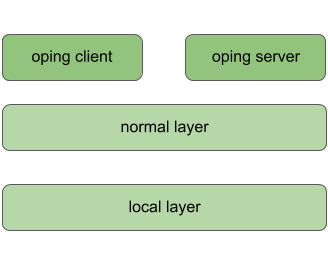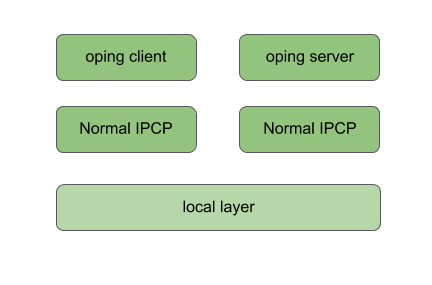diff options
| author | Dimitri Staessens <dimitri@ouroboros.rocks> | 2019-07-05 22:27:04 +0200 |
|---|---|---|
| committer | Dimitri Staessens <dimitri@ouroboros.rocks> | 2019-07-05 22:27:04 +0200 |
| commit | 95258be27446b3584528c5bc7177aca40ddba2d5 (patch) | |
| tree | f918e4415eacaacf6e4c7b0d00337990f9095bc4 /content/docs/tutorials/tutorial-2.md | |
| parent | e5d3f80261ebaed768ad718bd6fce0df848586fb (diff) | |
| download | website-95258be27446b3584528c5bc7177aca40ddba2d5.tar.gz website-95258be27446b3584528c5bc7177aca40ddba2d5.zip | |
content: Reorganize to better suit ananke theme
Diffstat (limited to 'content/docs/tutorials/tutorial-2.md')
| -rw-r--r-- | content/docs/tutorials/tutorial-2.md | 297 |
1 files changed, 297 insertions, 0 deletions
diff --git a/content/docs/tutorials/tutorial-2.md b/content/docs/tutorials/tutorial-2.md new file mode 100644 index 0000000..392a659 --- /dev/null +++ b/content/docs/tutorials/tutorial-2.md @@ -0,0 +1,297 @@ +--- +title: "Tutorial 2: Adding a layer" +draft: false +--- + +In this tutorial we will add a *normal layer* on top of the local layer. +Make sure you have a local layer running. The network will look like +this: + + + +Let's start adding the normal layer. We will first bootstrap a normal +IPCP, with name "normal_1" into the "normal_layer" (using default +options). In terminal 2, type: + +``` +$ irm ipcp bootstrap type normal name normal_1 layer normal_layer +``` + +The IRMd and IPCP will report the bootstrap: + +``` +==02301== irmd(II): Created IPCP 4363. +==04363== normal-ipcp(DB): IPCP got address 465922905. +==04363== directory(DB): Bootstrapping directory. +==04363== directory(II): Directory bootstrapped. +==04363== normal-ipcp(DB): Bootstrapped in layer normal_layer. +==02301== irmd(II): Bootstrapped IPCP 4363 in layer normal_layer. +==02301== irmd(DB): New instance (4363) of ipcpd-normal added. +==02301== irmd(DB): This process accepts flows for: +``` + +The new IPCP has pid 4363. It also generated an *address* for itself, +465922905. Then it bootstrapped a directory. The directory will map +registered names to an address or a set of addresses. In the normal DHT +the current default (and only option) for the directory is a Distributed +Hash Table (DHT) based on the Kademlia protocol, similar to the DHT used +in the mainline BitTorrent as specified by the +[BEP5](http://www.bittorrent.org/beps/bep_0005.html). This DHT will use +the hash algorithm specified for the layer (default is 256-bit SHA3) +instead of the SHA1 algorithm used by Kademlia. Just like any +Ouroboros-capable process, the IRMd will notice a new instance of the +normal IPCP. We will now bind this IPCP to some names and register them +in the local_layer: + +``` +$ irm bind ipcp normal_1 name normal_1 +$ irm bind ipcp normal_1 name normal_layer +$ irm register name normal_1 layer local_layer +$ irm register name normal_layer layer local_layer +``` + +The "irm bind ipcp" call is a shorthand for the "irm bind proc" call +that uses the ipcp name instead of the pid for convenience. Note that +we have bound the same process to two different names. This is to +allow enrollment using a layer name (anycast) instead of a specific +ipcp_name. The IRMd and local IPCP should log the following, just as +in tutorial 1: + +``` +==02301== irmd(II): Bound process 4363 to name normal_1. +==02301== irmd(II): Bound process 4363 to name normal_layer. +==02324== ipcpd-local(II): Registered e9504761. +==02301== irmd(II): Registered normal_1 in local_layer as e9504761. +==02324== ipcpd-local(II): Registered f40ee0f0. +==02301== irmd(II): Registered normal_layer in local_layer as +f40ee0f0. +``` + +We will now create a second IPCP and enroll it in the normal_layer. +Like the "irm ipcp bootstrap command", the "irm ipcp enroll" command +will create the IPCP if an IPCP with that name does not yet exist in the +system. An "autobind" option is a shorthand for binding the IPCP to +the IPCP name and the layer name. + +``` +$ irm ipcp enroll name normal_2 layer normal_layer autobind +``` + +The activity is shown by the output of the IRMd and the IPCPs. Let's +break it down. First, the new normal IPCP is created and bound to its +process name: + +``` +==02301== irmd(II): Created IPCP 13569. +==02301== irmd(II): Bound process 13569 to name normal_2. +``` + +Next, that IPCP will *enroll* with an existing member of the layer +"normal_layer". To do that it first allocates a flow over the local +layer: + +``` +==02324== ipcpd-local(DB): Allocating flow to f40ee0f0 on fd 64. +==02301== irmd(DB): Flow req arrived from IPCP 2324 for f40ee0f0. +==02301== irmd(II): Flow request arrived for normal_layer. +==02324== ipcpd-local(II): Pending local allocation request on fd 64. +==02301== irmd(II): Flow on port_id 0 allocated. +==02324== ipcpd-local(II): Flow allocation completed, fds (64, 65). +==02301== irmd(II): Flow on port_id 1 allocated. +``` + +Over this flow, it connects to the enrollment component of the normal_1 +IPCP. It sends some information that it will speak the Ouroboros +Enrollment Protocol (OEP). Then it will receive boot information from +normal_1 (the configuration of the layer that was provided when we +bootstrapped the normal_1 process), such as the hash it will use for +the directory. It signals normal_1 that it got the information so that +normal_1 knows this was successful. It will also get an address. After +enrollment is complete, both normal_1 and normal_2 will be ready to +accept incoming flows: + +``` +==13569== connection-manager(DB): Sending cacep info for protocol OEP to +fd 64. +==13569== enrollment(DB): Getting boot information. +==02301== irmd(DB): New instance (4363) of ipcpd-normal added. +==02301== irmd(DB): This process accepts flows for: +==02301== irmd(DB): normal_layer +==02301== irmd(DB): normal_1 +==04363== enrollment(DB): Enrolling a new neighbor. +==04363== enrollment(DB): Sending enrollment info (49 bytes). +==13569== enrollment(DB): Received enrollment info (49 bytes). +==13569== normal-ipcp(DB): IPCP got address 416743497. +==04363== enrollment(DB): Neighbor enrollment successful. +==02301== irmd(DB): New instance (13569) of ipcpd-normal added. +==02301== irmd(DB): This process accepts flows for: +==02301== irmd(DB): normal_2 +``` + +Now that the member is enrolled, normal_1 and normal_2 will deallocate +the flow over which it enrolled and signal the IRMd that the enrollment +was successful: + +``` +==02301== irmd(DB): Partial deallocation of port_id 0 by process +13569. +==02301== irmd(DB): Partial deallocation of port_id 1 by process 4363. +==02301== irmd(II): Completed deallocation of port_id 0 by process +2324. +==02301== irmd(II): Completed deallocation of port_id 1 by process +2324. +==02324== ipcpd-local(II): Flow with fd 64 deallocated. +==02324== ipcpd-local(II): Flow with fd 65 deallocated. +==13569== normal-ipcp(II): Enrolled with normal_layer. +==02301== irmd(II): Enrolled IPCP 13569 in layer normal_layer. +``` + +Now that normal_2 is a full member of the layer, the irm tool will +complete the autobind option and bind normal_2 to the name +"normal_layer" so it can also enroll new members. + +``` +==02301== irmd(II): Bound process 13569 to name normal_layer. +``` + + + +At this point, have two enrolled members of the normal_layer. What we +need to do next is connect them. We will need a *management flow*, for +the management network, which is used to distribute point-to-point +information (such as routing information) and a *data transfer flow* +over which the layer will forward traffic coming either from higher +layers or internal components (such as the DHT and flow allocator). They +can be established in any order, but it is recommended to create the +management network first to achieve the minimal setup times for the +network layer: + +``` +$ irm ipcp connect name normal_2 dst normal_1 comp mgmt +$ irm ipcp connect name normal_2 dst normal_1 comp dt +``` + +The IPCP and IRMd log the flow and connection establishment: + +``` +==02301== irmd(DB): Connecting Management to normal_1. +==02324== ipcpd-local(DB): Allocating flow to e9504761 on fd 64. +==02301== irmd(DB): Flow req arrived from IPCP 2324 for e9504761. +==02301== irmd(II): Flow request arrived for normal_1. +==02324== ipcpd-local(II): Pending local allocation request on fd 64. +==02301== irmd(II): Flow on port_id 0 allocated. +==02324== ipcpd-local(II): Flow allocation completed, fds (64, 65). +==02301== irmd(II): Flow on port_id 1 allocated. +==13569== connection-manager(DB): Sending cacep info for protocol LSP to +fd 64. +==04363== link-state-routing(DB): Type mgmt neighbor 416743497 added. +==02301== irmd(DB): New instance (4363) of ipcpd-normal added. +==02301== irmd(DB): This process accepts flows for: +==02301== irmd(DB): normal_layer +==02301== irmd(DB): normal_1 +==13569== link-state-routing(DB): Type mgmt neighbor 465922905 added. +==02301== irmd(II): Established Management connection between IPCP 13569 +and normal_1. +``` + +The IPCPs established a management flow between the link-state routing +components (currently that is the only component that needs a management +flow). The output is similar for the data transfer flow, however, +creating a data transfer flow triggers some additional activity: + +``` +==02301== irmd(DB): Connecting Data Transfer to normal_1. +==02324== ipcpd-local(DB): Allocating flow to e9504761 on fd 66. +==02301== irmd(DB): Flow req arrived from IPCP 2324 for e9504761. +==02301== irmd(II): Flow request arrived for normal_1. +==02324== ipcpd-local(II): Pending local allocation request on fd 66. +==02301== irmd(II): Flow on port_id 2 allocated. +==02324== ipcpd-local(II): Flow allocation completed, fds (66, 67). +==02301== irmd(II): Flow on port_id 3 allocated. +==13569== connection-manager(DB): Sending cacep info for protocol dtp to +fd 65. +==04363== dt(DB): Added fd 65 to SDU scheduler. +==04363== link-state-routing(DB): Type dt neighbor 416743497 added. +==02301== irmd(DB): New instance (4363) of ipcpd-normal added. +==02301== irmd(DB): This process accepts flows for: +==02301== irmd(DB): normal_layer +==02301== irmd(DB): normal_1 +==13569== dt(DB): Added fd 65 to SDU scheduler. +==13569== link-state-routing(DB): Type dt neighbor 465922905 added. +==13569== dt(DB): Could not get nhop for addr 465922905. +==02301== irmd(II): Established Data Transfer connection between IPCP +13569 and normal_1. +==13569== dt(DB): Could not get nhop for addr 465922905. +==13569== dht(DB): Enrollment of DHT completed. +``` + +First, the data transfer flow is added to the SDU scheduler. Next, the +neighbor's address is added to the link-state database and a Link-State +Update message is broadcast over the management network. Finally, if the +DHT is not yet enrolled, it will try to do so when it detects a new data +transfer flow. Since this is the first data transfer flow in the +network, the DHT will try to enroll. It may take some time for the +routing entry to get inserted to the forwarding table, so the DHT +re-tries a couple of times (this is the "could not get nhop" message +in the debug log). + +Our oping server is not registered yet in the normal layer. Let's +register it in the normal layer as well, and connect the client: + +``` +$ irm r n oping_server layer normal_layer +$ oping -n oping_server -c 5 +``` + +The IRMd and IPCP will log: + +``` +==02301== irmd(II): Registered oping_server in normal_layer as +465bac77. +==02301== irmd(II): Registered oping_server in normal_layer as +465bac77. +==02324== ipcpd-local(DB): Allocating flow to 4721372d on fd 68. +==02301== irmd(DB): Flow req arrived from IPCP 2324 for 4721372d. +==02301== irmd(II): Flow request arrived for oping_server. +==02324== ipcpd-local(II): Pending local allocation request on fd 68. +==02301== irmd(II): Flow on port_id 4 allocated. +==02324== ipcpd-local(II): Flow allocation completed, fds (68, 69). +==02301== irmd(II): Flow on port_id 5 allocated. +==02301== irmd(DB): New instance (2337) of oping added. +==02301== irmd(DB): This process accepts flows for: +==02301== irmd(DB): oping_server +==02301== irmd(DB): Partial deallocation of port_id 4 by process 749. +==02301== irmd(II): Completed deallocation of port_id 4 by process +2324. +==02324== ipcpd-local(II): Flow with fd 68 deallocated. +==02301== irmd(DB): Dead process removed: 749. +==02301== irmd(DB): Partial deallocation of port_id 5 by process 2337. +==02301== irmd(II): Completed deallocation of port_id 5 by process +2324. +==02324== ipcpd-local(II): Flow with fd 69 deallocated. +``` + +The client connected over the local layer instead of the normal layer. +This is because the IRMd prefers the local layer. If we unregister the +name from the local layer, the client will connect over the normal +layer: + +``` +$ irm unregister name oping_server layer local_layer +$ oping -n oping_server -c 5 +``` + +As shown by the logs (the normal IPCP doesn't log the flow allocation): + +``` +==02301== irmd(DB): Flow req arrived from IPCP 13569 for 465bac77. +==02301== irmd(II): Flow request arrived for oping_server. +==02301== irmd(II): Flow on port_id 5 allocated. +==02301== irmd(II): Flow on port_id 4 allocated. +==02301== irmd(DB): New instance (2337) of oping added. +==02301== irmd(DB): This process accepts flows for: +==02301== irmd(DB): oping_server +``` + +This concludes tutorial 2. You can shut down everything or continue with +tutorial 3. |
